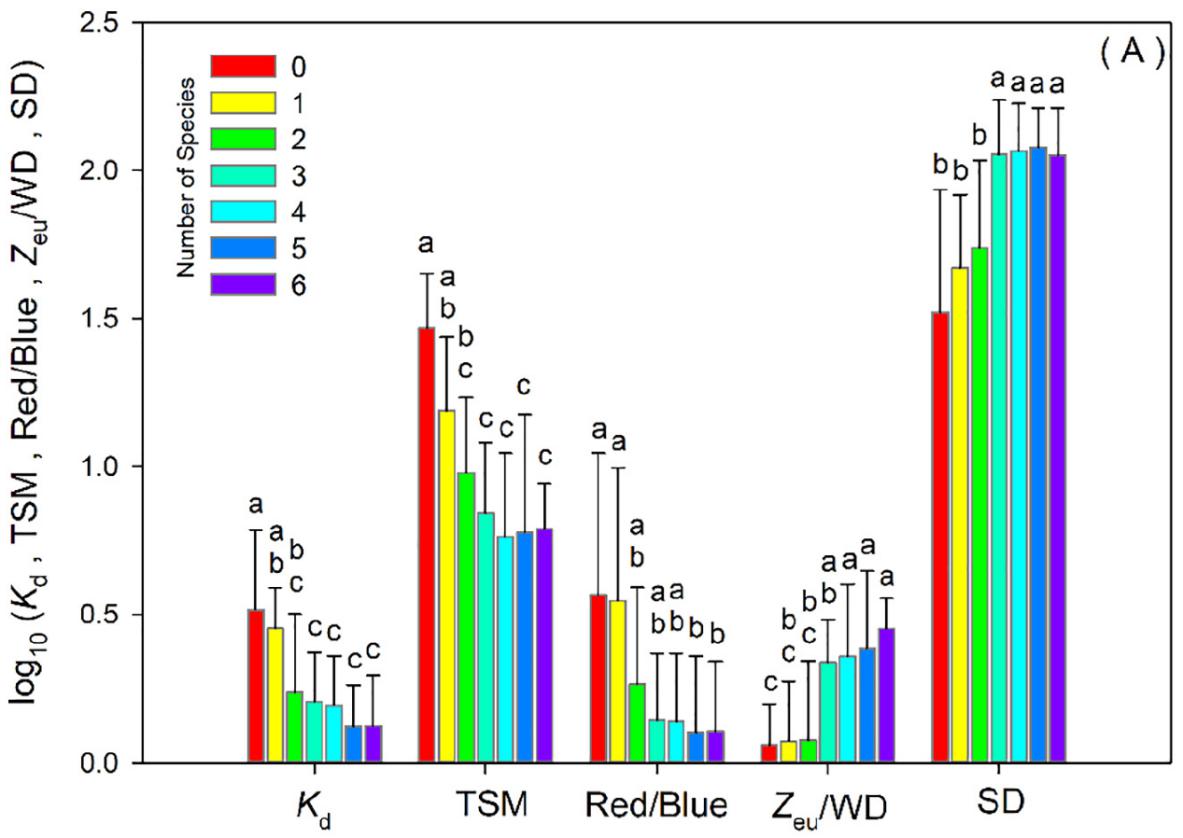The recovery and long-term maintenance of submerged macrophytes is the key to the restoration of the ecosystem in eutrophic lakes, because submerged macrophytes can promote the transformation of lake ecosystem from algae-type turbid water steady state to grass-type clear water steady state through construction functions.
Some pioneering species are selected for the restoration of submerged macrophytes in eutrophic lakes, such as Myriophyllum spicatum, Ceratophyllum demersum, Stuckenia pectinata, Vallisneria natans, and Potamogeton wrightii. However, the optimal species richness and assemblage is still unclear.
In order to solve the above problem through field data, doctoral student LIU Han, under the supervision of Prof. LIU Guihua and Prof. XING Wei from Wuhan Botanical Garden, investigated the submerged vegetations and environment factors of 19 shallow lakes in the mid-lower reaches of the Yangtze River.
The water nutrients (TN and TP) were positively correlated with the light attenuation coefficient and the Red/ Blue ratio, indicating that bad water quality could significantly reduce water clarity. Poor underwater light climate was the direct factor for degradation and loss of submerged macrophytes in eutrophic shallow lakes. The underwater light climate significantly affected species richness of submerged macrophytes in the study.
The study found that three or more species assemblages of submerged macrophytes could significantly improve the water clarity of the eutrophic lakes in the middle and lower reaches of the Yangtze River, but the water quality was not significantly improved. The basic species assemblage of Myriophyllum spicatum and Vallisneria natans could be more advantageous for the restoration of submerged macrophytes in eutrophic shallow Yangtze floodplain lakes.
Results imply that species richness and species assemblage are critical for restoration of submerged macrophytes in eutrophic shallow lakes.
This study provides theoretical guidance for the stepwise restoration of submerged vegetation and the long-term maintenance of clear-water state in eutrophic lakes along the mid-lower reaches of the Yangtze River.
This work was supported by the National Natural Science Foundation of China and Wuhan Botanical Garden. Relevant research results have been published in Science of the Total Environment entitled “How many submerged macrophyte species are needed to improve water clarity and quality in Yangtze floodplain lakes?”.

Underwater light field characteristics (Kd, TSM, Red/Blue, Zeu/WD, SD) under the presence of different species richness (Image by WBG)




